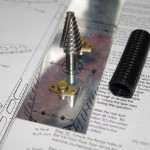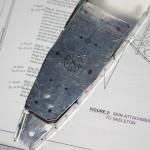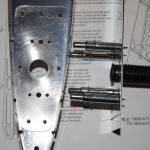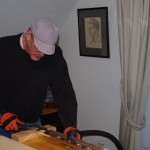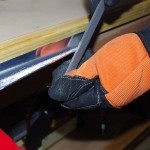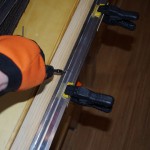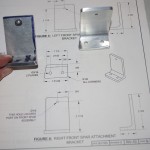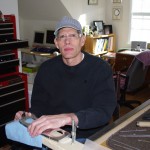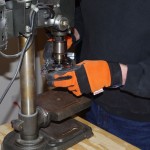Spent time this week preparing for the big two week building push expected during Rich’s visit in early March. I fabricated a pair of drying racks from 1×1″ pine boards using medium eyelets to hold hooks made from 14/3 electrical wire. This combination was cheap and seems to work fine. Also scuffed the non-skin components of the VS and rudder.
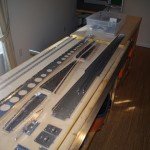 Here all the parts are staged prior to scuffing.
Here all the parts are staged prior to scuffing.
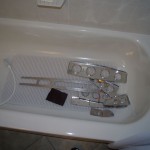 Used the spare bathroom and a doggie shower attachment to scuff with maroon Scotchbrite and green Dawn dish washing soap. This action also took off the major grease and grime from earlier processing steps. This is a porcelain tub, so a rubber bath mat cushions the parts in this picture.
Used the spare bathroom and a doggie shower attachment to scuff with maroon Scotchbrite and green Dawn dish washing soap. This action also took off the major grease and grime from earlier processing steps. This is a porcelain tub, so a rubber bath mat cushions the parts in this picture.
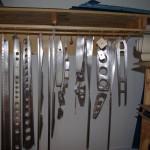 All the parts are scuffed, cleaned and are hanging on the new drying racks.
All the parts are scuffed, cleaned and are hanging on the new drying racks.
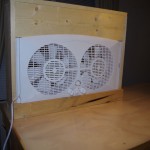 I manufactured a fake window box for the dual fan setup in a few hours with cheap 2×6 pine boards. The fan is supposed to move 1420 cfm, the whole shed is 800 cubic feet. If all goes as planned, a complete air turnover will happen twice a minute – not bad for a home paint booth.
I manufactured a fake window box for the dual fan setup in a few hours with cheap 2×6 pine boards. The fan is supposed to move 1420 cfm, the whole shed is 800 cubic feet. If all goes as planned, a complete air turnover will happen twice a minute – not bad for a home paint booth.
